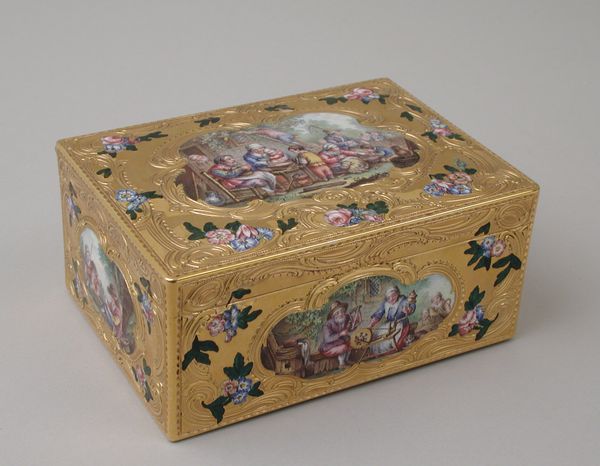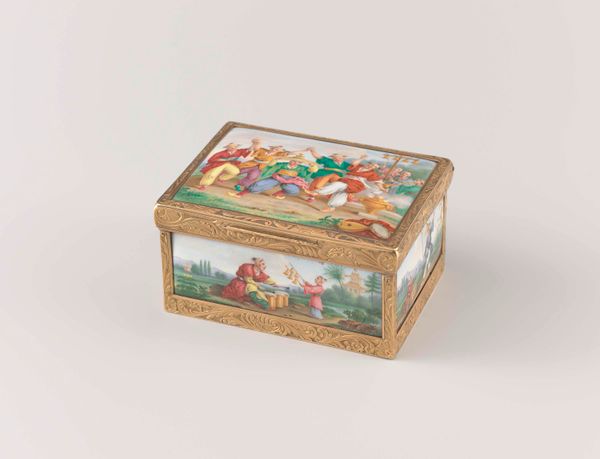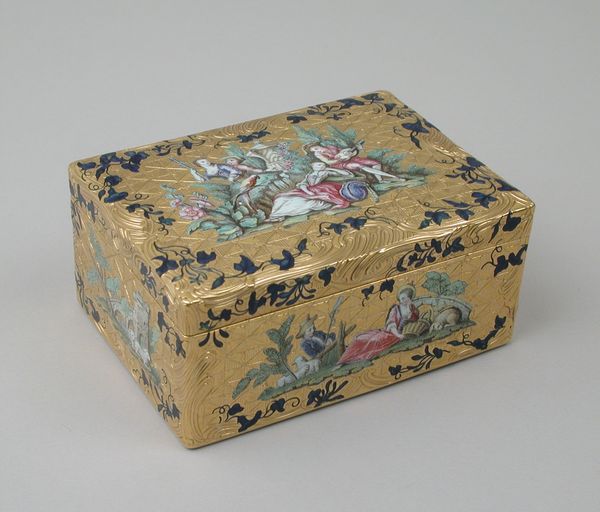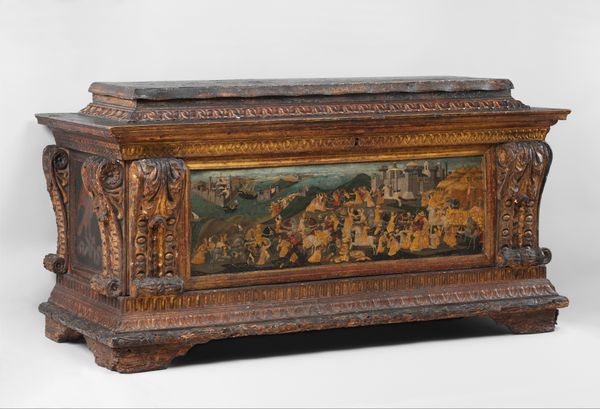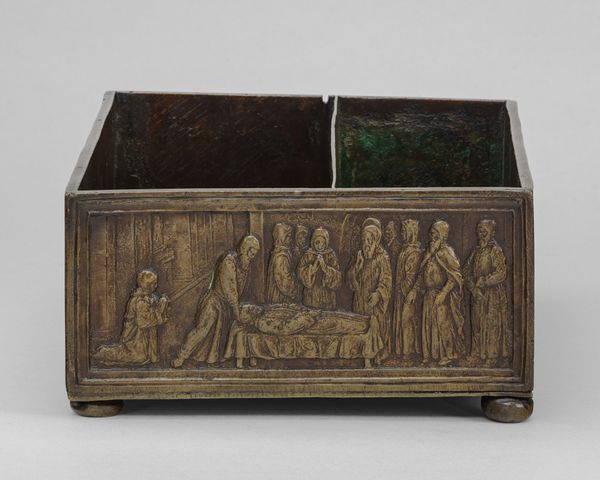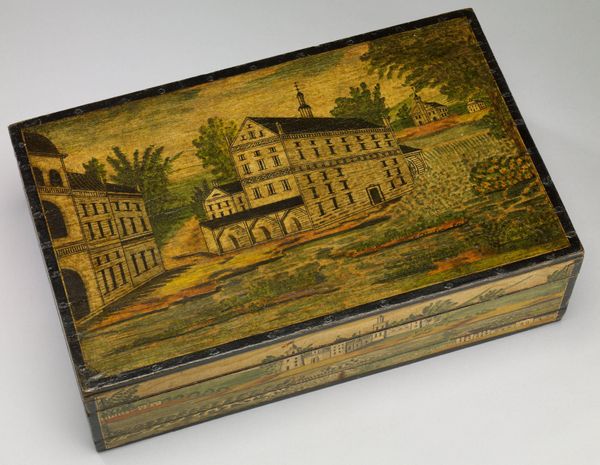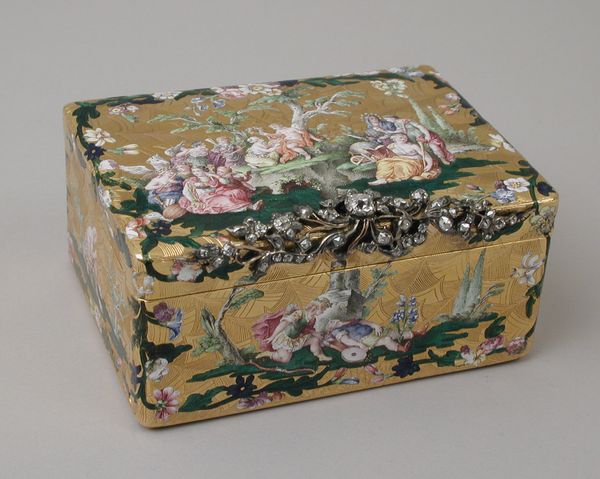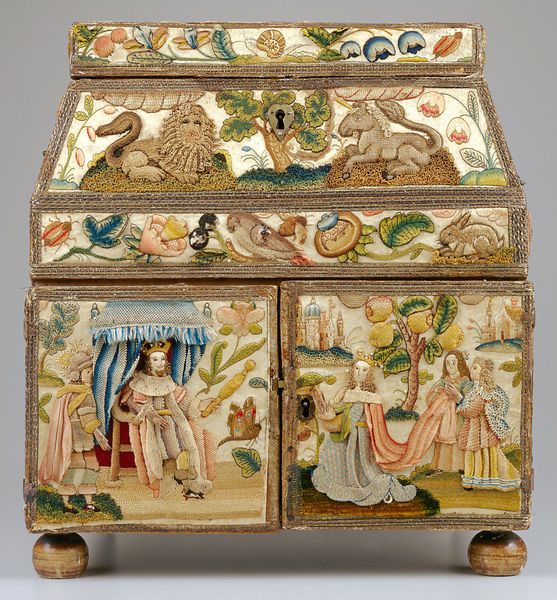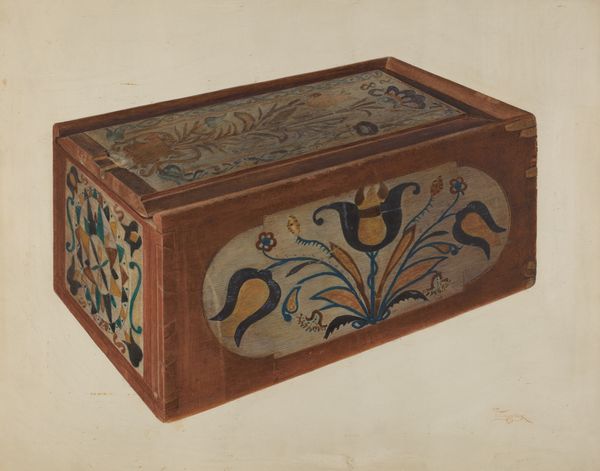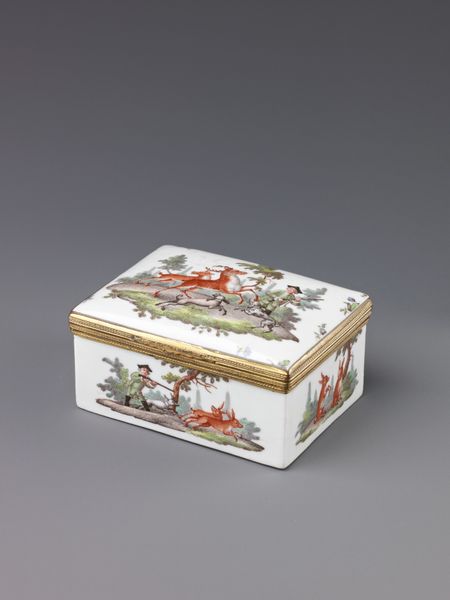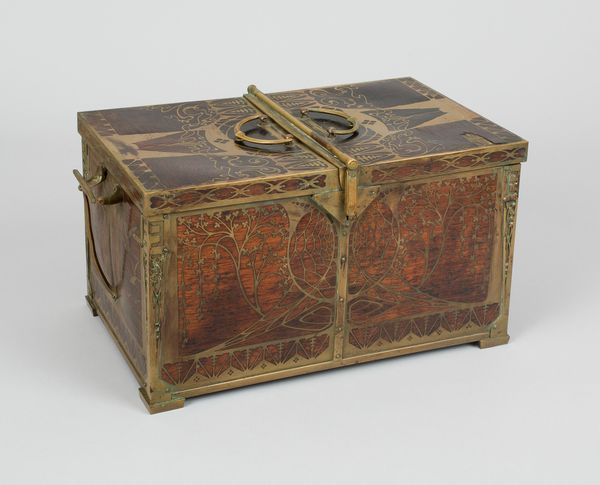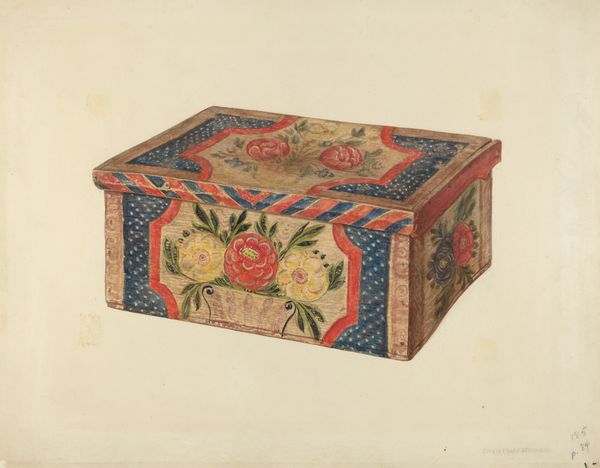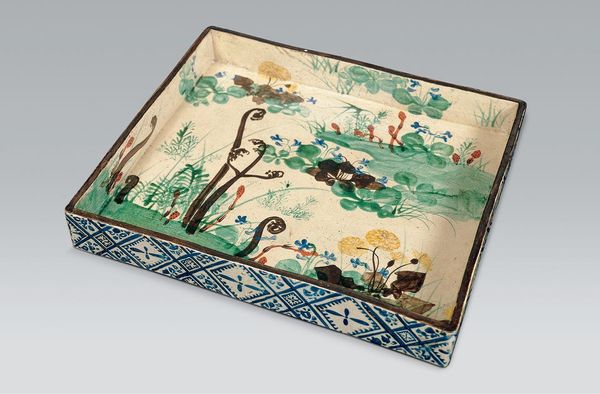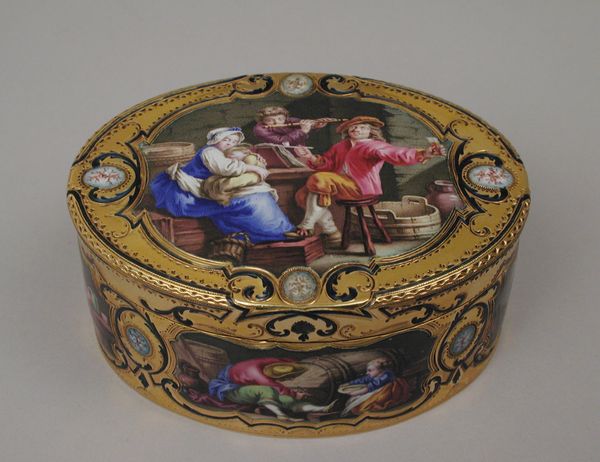
-St. Joseph's Society for Foreign Missions- still bank c. late 19th century
0:00
0:00
print, wood
#
narrative-art
# print
#
wood
Dimensions: 4 1/16 x 6 7/16 x 2 13/16 in. (10.32 x 16.35 x 7.14 cm)
Copyright: Public Domain
Curator: Well, this little box certainly speaks volumes. This is a late 19th-century mixed media still bank affiliated with St. Joseph's Society for Foreign Missions. It resides here at the Minneapolis Institute of Art. What catches your eye first about it? Editor: The juxtaposition of the figures. On the one hand, the serene, almost classical rendering of Christ on the cross—but surrounded by images intended to represent "exotic" populations, all contained within this very tangible, functional object. The phrase “Go ye into the whole world and preach the Gospel to every creature!" framing the whole picture strikes me. Curator: That scripture is key, because what we are seeing is not a straightforward representation but rather a narrative device meant to generate sympathy—and funding—for missionary work abroad. The bank is wood with collage and printed elements. Consider its function. This wasn't meant to beautify a parlor. Editor: No, absolutely. It's about recruitment and fundraising for the Church's mission, with a clear message. It's interesting to look at how these images might have resonated at the time. Those skull motifs hanging from the tree, the men with spears and shields—they carry so much baggage with them as symbols, speaking to imagined threats. Curator: Exactly. We must remember the context. In the late 19th century, European and American societies operated with a strong conviction about their own cultural and religious superiority. Objects like these reflect and perpetuate that unequal dynamic. This piece is an artifact demonstrating cultural biases during westward expansion and imperialist ambition under the guise of foreign missions. Editor: And seeing that hierarchy visually laid out in something as banal as a coin bank highlights just how ingrained it was. The way symbols were being consumed by a 19th-century audience so far removed geographically is astounding. What I mean to say is, did the viewer understand all of its historical context in detail or its larger allegorical relevance to humankind's collective spiritual history? Probably not, but I suspect they did not need to in order to emotionally engage with its overall message. Curator: You’re absolutely right. Its design is a testament to the persuasive power of images. What do you think we can take away from studying such a complex, though humble, object? Editor: It’s a powerful, albeit problematic, illustration of how visual narratives intersect with societal values. Its imagery resonates deeply with a history of imperialism, while acting as a signifier of faith, commitment and devotion, demonstrating the complexity of symbols in play at once.
Comments
No comments
Be the first to comment and join the conversation on the ultimate creative platform.
